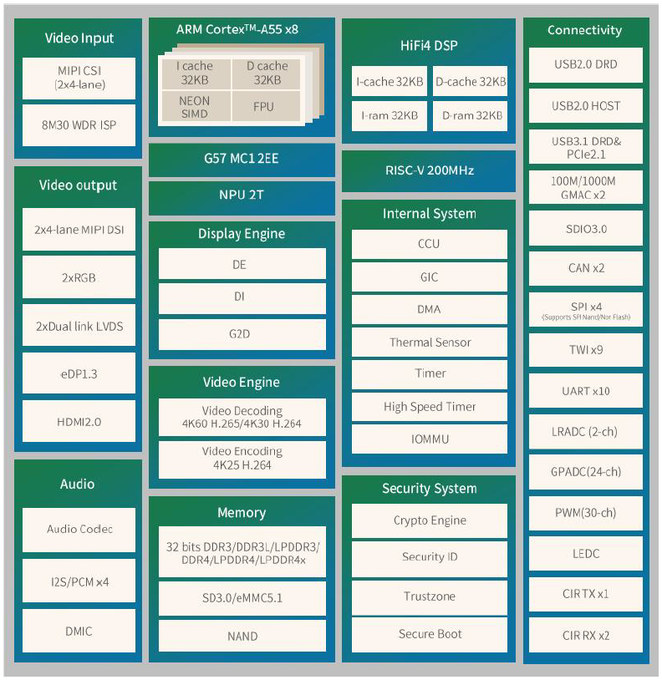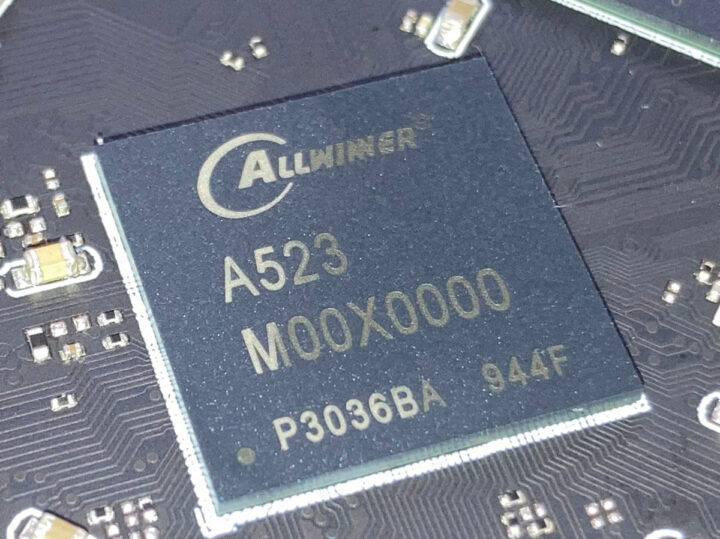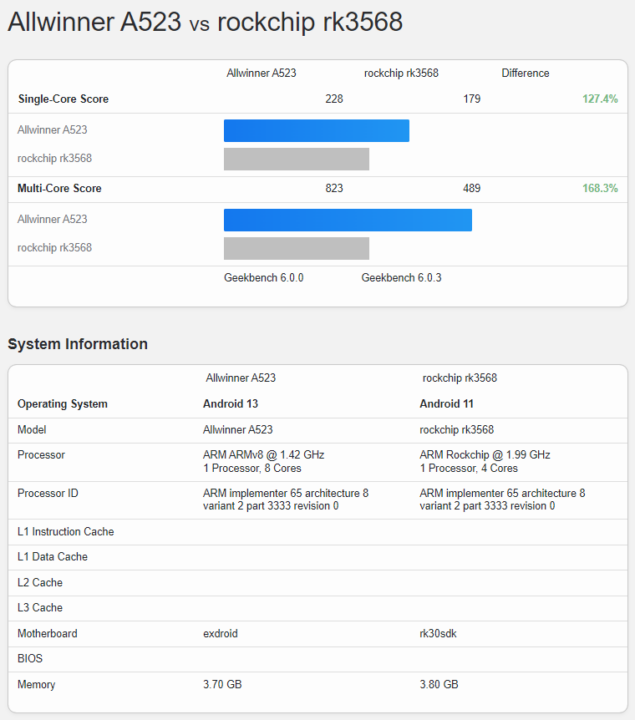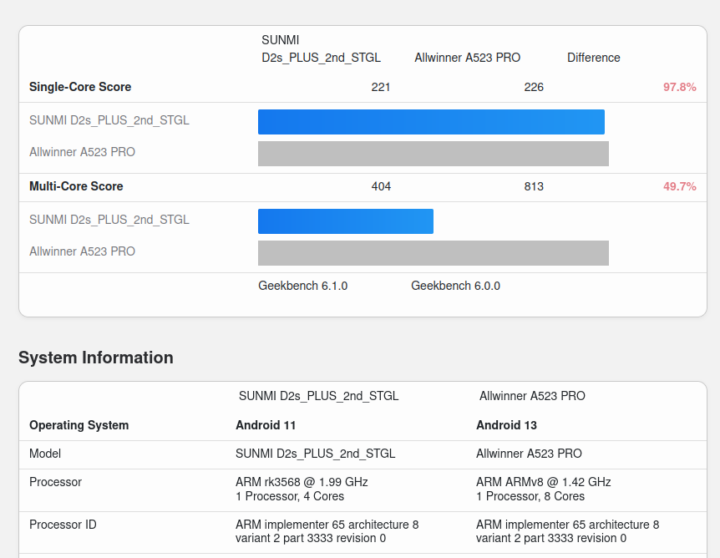Allwinner A523 is an octa-core Cortex-A55 processor clocked at up to 1.4/1.8GHz in big.LITTLE (DynamIQ) configuration and mainly designed for tablets with multiple display interfaces such as two 4-lane MIPI DSPI interfaces, two MIPI CSI camera interfaces, a Mali-G57 GPU, and more. But the block diagram below also shows two Gigabit Ethernet (GMAC) interfaces and HDMI 2.0 output among other interfaces meaning it will likely be used in Smart Home products as the Allwinner R828/MR828, and possibly automotive products as the Allwinner T527.
I first discovered the Allwinner A523 last March via a tweet by (GLGH_), but there was little information at that time. We now have further details about the processor and upcoming products such as the Teclast P26T, and a potential Allwinner A523 single board computer or module.
Allwinner A523 preliminary specifications:
- CPU
- Application – Octa-core Arm Cortex-A55 @ in big.LITTLE configuration with four cores @ 1.80 GHz and four cores @ 1.42GHz
- Real-time – E906 RISC-Vcore @ 200MHz
- GPU – Mali G57 MC1 2EE
- DSP – HiFi4 audio DSP
- NPU – 2 TOPS AI accelerator
- System Memory – 32-bit DDR3, LPDDR3, DDR4, LPDDR4, or LPDDR4X 2400MHz
- Storage I/F – MMC, eMMC 5.1, SPI Flash
- Video output
- Internal – 2x RGB, 2x MIPI DSI, dual-channel LVDS, 1x eDP1.3 up to 2560×1600 @ 60Hz
- External – HDMI 2.0
- Camera – 8M ISP, 2x 4-lane MIPI CSI
- Audio – Audio codec, 4x I2C/PCM, DMIC
- Networking – 2x Gigabit Ethernet (GMAC)
- USB – 1x USB 3.0 (apparently multiplexed with 1-lane PCIe 2.1), 2x USB 2.0
- PCIe – 1-lane PCIe 2.1
- Other peripheral interfaces
- SDIO 3.0
- 2x CAN Bus
- 4x SPI (also used for NAND/NOR flash)
- 9x TWI/I2C, 10x UART
- 2-ch LRPADC, 24-ch GPADC
- 30x PWM
- 1x CIR Tx, 2x CIR Rx
- Security system – Crypto engine, security ID, TrustZone, secure boot
- Process – 22 nm
The specifications above are derived from information from the block diagram above and linux-sunxi community since Allwinner has just to publish information about the new processor. Some of the details conflict, so there may be errors. The Arm Cortex-A55 CPU frequencies come from Geekbench 6 results shared by GLGH_, which compare the Amlogic A523 to the Rockchip RK3568 (4x A55 @ 1.99 GHz) and show noticeable performance improvements in terms of CPU performance somehow even for the single thread benchmark despite the higher frequency.
It must be an outlier as if we select other Geekbench 6 results, both have a similar single-core performance. One difference is the use of Android 13 against Android 11, but I’m not sure it matters that much for those types of CPU benchmarks.
One of the first products based on Allwinner A523 is the Teclast P26T tablet with a 10.1-inch IPS display with 1280×800 resolution, 4GB RAM, and 64GB eMMC flash, but currently only sold in China. GLGH_ also plans to work on a new project based on the new octa-core Cortex-A55 project, which probably means a module and/or single board computer is in the works, or soon will be.


Jean-Luc started CNX Software in 2010 as a part-time endeavor, before quitting his job as a software engineering manager, and starting to write daily news, and reviews full time later in 2011.
Support CNX Software! Donate via cryptocurrencies, become a Patron on Patreon, or purchase goods on Amazon or Aliexpress








